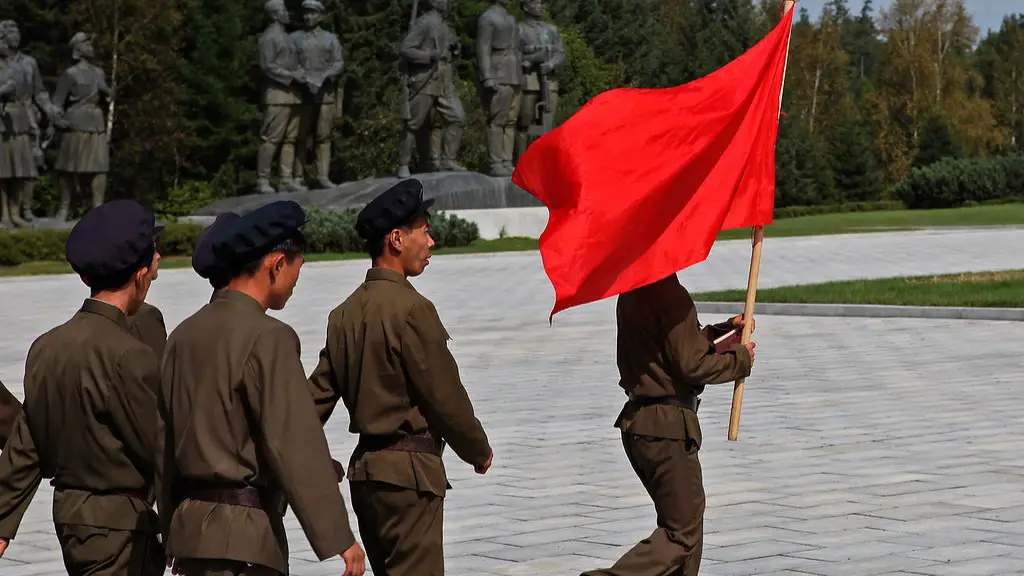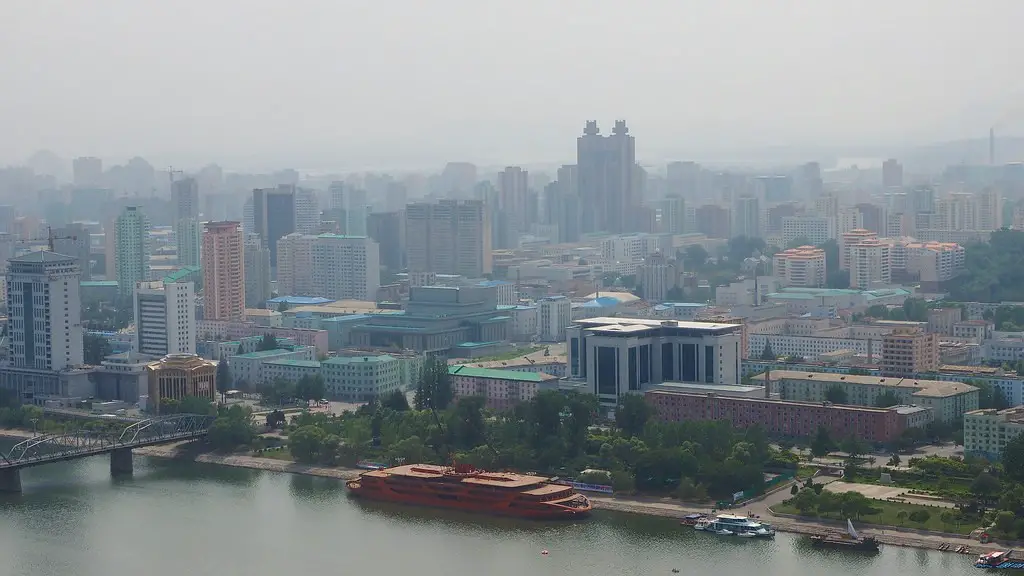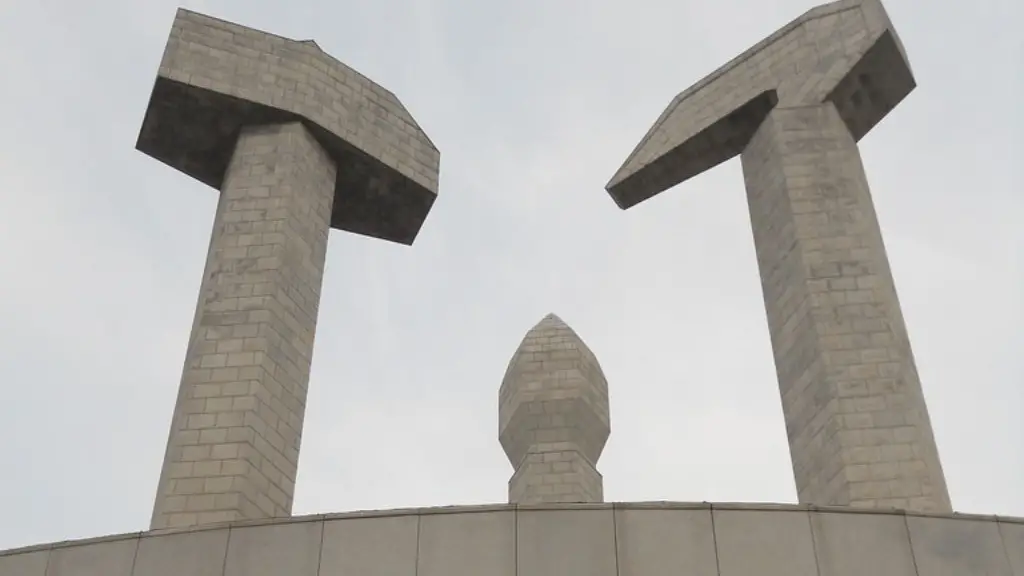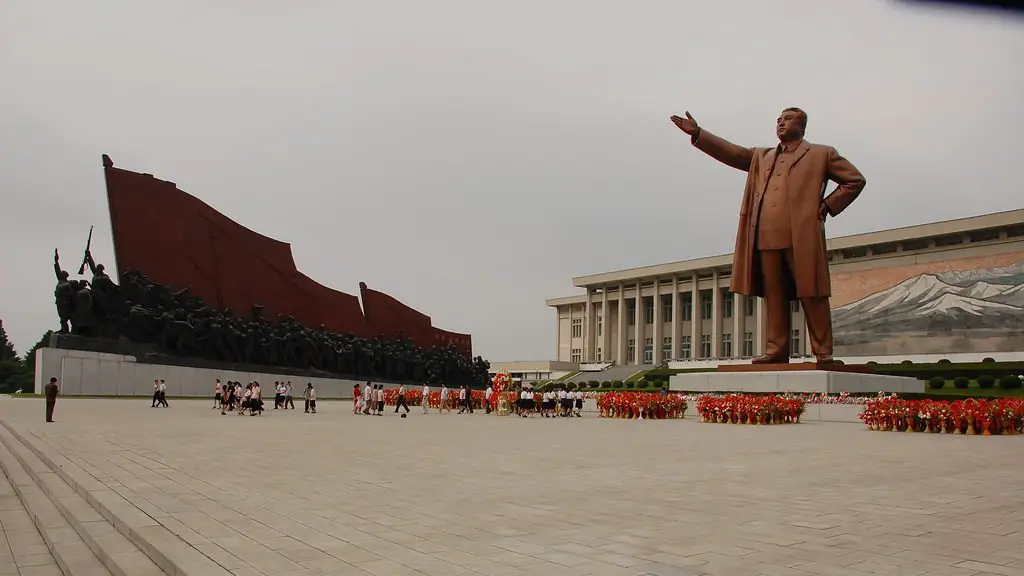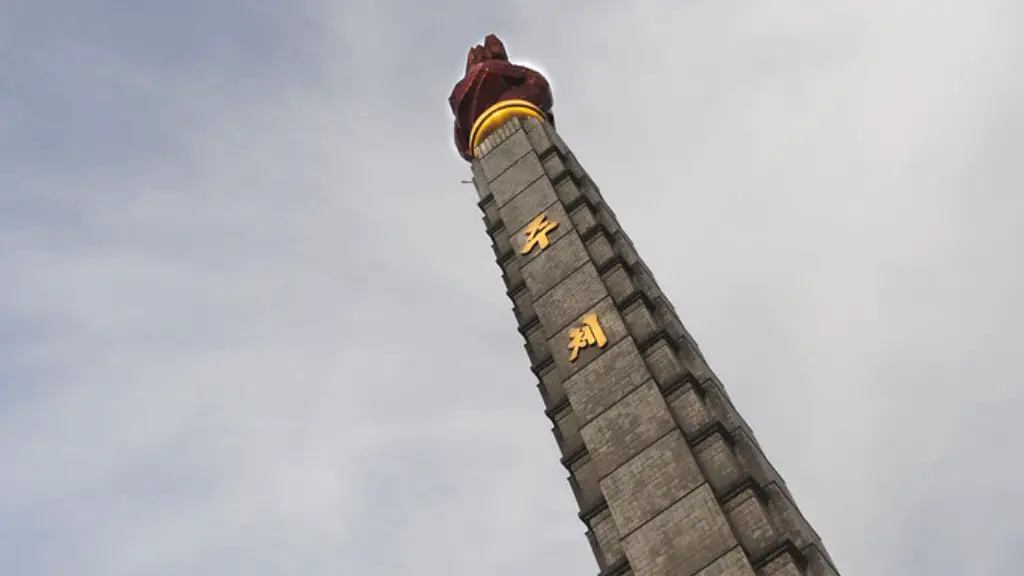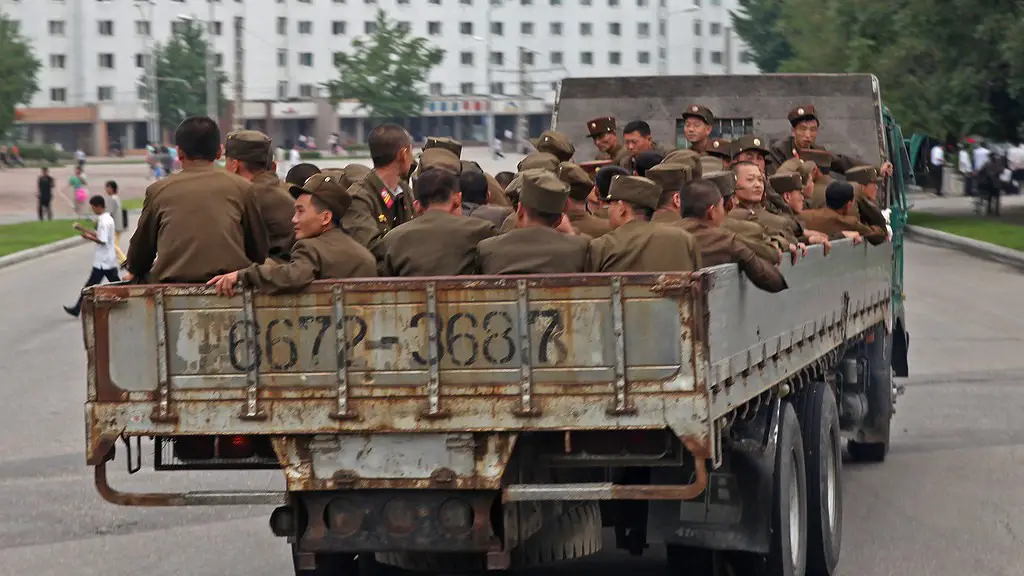It is no secret that North Korea is a dictatorship. How did it become one? It is a fascinating story.
Some experts say that North Korea became a dictatorship because of its unique history. Korea was once a unified country, but it was divided into North and South after World War II. The Soviet Union occupied the north, and the United States occupied the south. This division created two very different societies.
In the north, the Soviet Union installed a Communist government. In the south, the United States installed a democratic government. The two governments were constantly at odds with each other.
The Korean War broke out in 1950 when the North invaded the South. The war ended in a stalemate, but the North remained a Communist dictatorship while the South became a democracy.
Since then, the North has been cut off from the rest of the world. It is one of the most isolated countries in the world. This isolation has helped to create a cult of personality around the North Korean leader, Kim Jong-un.
The North Korean government controls every aspect of its citizens’ lives. It does not tolerate dissent. It does not allow freedom of religion. It does not allow freedom of expression.
North Korea is a dictatorship because it
The process by which North Korea became a dictatorship is a complicated one. A variety of factors contributed to the rise of totalitarianism in the country, including the legacy of Japanese colonialism, the Korean War, and the personality of Kim Il-Sung.
Under Japanese rule, Korea was a colony for 35 years, from 1910 to 1945. During this time, the Japanese government sought to assimilate the Korean people into Japanese culture. This process of assimilation included the suspension of many of Korea’s traditional institutions, such as the family, Confucianism, and the Korean language. In their place, the Japanese sought to promote loyalty to the Emperor and obedience to the state.
After Japan’s defeat in World War II, Korea was divided into two zones, with the Soviet Union occupying the north and the United States occupying the south. The different ideologies of the two superpowers led to the development of two separate governments in the north and south, each with its own vision for the future of the Korean peninsula.
The outbreak of the Korean War in 1950 further exacerbated the divide between the north and south. The war lasted for three years and resulted in the deaths of millions of people. When it finally ended in 1953, the country was left in ruins
What makes North Korea a dictatorship?
The North Korean political system is based on the principle of centralization, with the constitution defining North Korea as “a dictatorship of people’s democracy” under the leadership of the Workers’ Party of Korea (WPK). The WPK is given legal supremacy over other political parties, meaning that it has the ultimate say in decision-making. This centralization of power ensures that the North Korean government is able to maintain tight control over the country and its people.
Kim Il-sung was one of the guerrilla leaders who fought against the Japanese during World War II. He later became the first leader of North Korea. Kim Il-sung was a communist, and he used his power to create a communist state in North Korea. Kim Il-sung was a brutal dictator, and he ruled North Korea with an iron fist. He was responsible for the death of many North Koreans, and he was also responsible for the country’s economic decline.
When did the North Korean dictatorship start
There are a few things to keep in mind when writing a note. First, make sure to write in a clear and concise manner. Secondly, be sure to use proper grammar and punctuation. Lastly, try to keep the note as positive as possible.
The main reason that North Korea formed a communist government was because it was located next to China. North Korea was heavily influenced by the Soviet Union and saw China as a model for successful communism.
How does North Korea power corrupt?
The regime’s strict rules and draconian punishments against accessing foreign media or modifying radio or television receivers to access foreign media are commonly evaded by offering bribes to the police. Informing on colleagues and family members has become less common.
The forced resettlement of citizens and whole families is a routine punishment for North Korean refugees who flee to China. They are often repatriated back to North Korea by authorities and are routinely beaten and sent to prison camps after repatriation.
How did North Korea become poor?
The government’s control over the economy has led to stagnation and poverty in North Korea. The lack of competition between businesses has allowed the government to maintain a hold on the economy, preventing growth and causing suffering for the people. Poor governance by the totalitarian regime has also contributed to the poverty and suffering of the people of North Korea.
Kim successfully rallied the Koreans in Siberia and led them in a number of battles against the counter-revolutionaries and the Allied Expeditionary Forces. She is considered a hero in North Korea, and a statue of her was erected in Pyongyang.
How did Korea split
The Korean War was a conflict between North Korea and South Korea that lasted from 1950 to 1953. The war began on June 25, 1950, when North Korea invaded South Korea in an attempt to re-unify the peninsula under its communist rule. The United States, which had been allied with South Korea, quickly intervened, and the UN Security Council passed a resolution ordering North Korea to withdraw. North Korea refused, and the war continued. The war ended in a stalemate, with an armistice signed on July 27, 1953. This armistice created the Korean Demilitarized Zone (DMZ), which has divided Korea ever since.
Slavery in Korea had a long and storied history, spanning some 1,500 years. It was only finally abolished in 1895, though it continued to exist in some form until 1930. The slave population declined steadily over time, reaching just 15% by 1858.
Was Korea a dictatorship?
The Third Republic was supposed to be a return to civilian government under the National Assembly, but it was really a dictatorship under Park, the Supreme Council, and the Democratic Republican Party.
It is perfectly fine to take pictures and videos in North Korea, contrary to popular belief or media suggestion. Taking photos and videos is a great way to capture memories of your trip and share them with friends and family. North Korea is a beautiful country with a rich culture and history, so make sure to take plenty of pictures and videos to remember your time there!
Why did the Soviets want Korea
According to a letter dictated by Stalin himself months after the 1950 invasion, and discovered in Soviet archives in 2005, one of the main reasons that Stalin backed a communist invasion of South Korea was to “entangle” the United States in a costly war in East Asia and “distract” America’s attention away from Eastern .
In the summer of 1950, communist forces in North Korea invaded the capitalist nation of South Korea, sparking the Korean War. The majority of historians agree that the outbreak of this war can be attributed to Stalin and the USSR’s attempt to spread communism throughout the world. Although the USSR claimed to support the North Koreans in this war, it is generally believed that they did not provide enough aid to ensure a victory. In the end, the war resulted in a stalemate, with neither side gaining any significant ground.
Why did the Soviet Union have control of North Korea?
The Soviet invasion of Korea in 1945 was a response to the country’s colonization by the Japanese. The Soviet Union agreed with the United States to divide the country at the 38th parallel, with Moscow in charge of the north and Washington in charge of the south. North Korea came under the control of the Soviet Civil Administration and People’s Committee of North Korea from 1945 to 1948.
The North Korea’s long-range missile and nuclear programs are the region’s most immediate security challenge. Any major instability or conflict on the Korean Peninsula would have severe strategic, economic and humanitarian repercussions.
Does North Korea punish families
The practice of kin punishment in North Korea is a brutal one where three generations of a political offender’s family can be summarily imprisoned or executed. This is confirmed by numerous testimonies of North Korean defectors. This practice is a clear violation of human rights and must be stopped.
Significant human rights issues included: unlawful or arbitrary killings by the government; forced disappearances by the government; torture and cruel, inhuman, and degrading treatment and punishment by government authorities; harsh and life-threatening prison conditions, including in political prison camps; arbitrary arrest and detention, including of lawyers, students, and members of the media and political opposition; tight restrictions on freedom of assembly, association, expression, and travel; and public executions.
Warp Up
In 1948, the Democratic People’s Republic of Korea was established in the northern portion of the Korean Peninsula, while the Republic of Korea was established in the southern portion.
Since its inception, North Korea has been a dictatorship, with a single party, the Workers’ Party of Korea, holding all political power. The country’s first leader, Kim Il-Sung, held onto power for 46 years, until his death in 1994. His son, Kim Jong-Il, then took over and ruled for 17 years until his death in 2011. Kim Jong-Un, the son of Kim Jong-Il, is the current leader of North Korea.
The North Korean government is a dictatorship that has been passed down through the Kim family for generations. The government controls every aspect of citizens’ lives and does not allow for any dissent or criticism. North Korea is a closed country, and information about what is happening inside the country is difficult to obtain. Despite the hardships, the North Korean people have a deep sense of national pride and love for their country.
